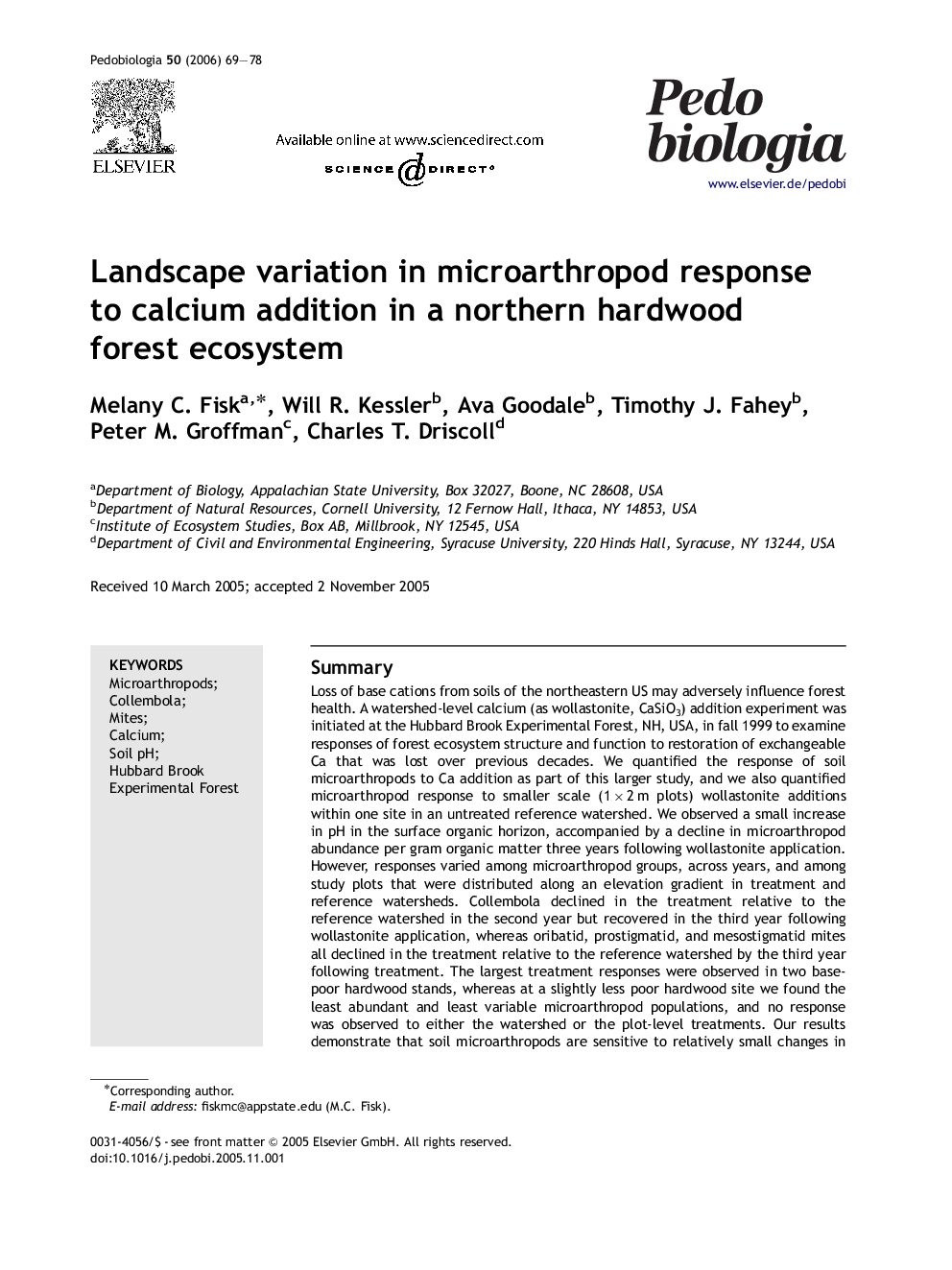| Article ID | Journal | Published Year | Pages | File Type |
|---|---|---|---|---|
| 2061431 | Pedobiologia | 2006 | 10 Pages |
SummaryLoss of base cations from soils of the northeastern US may adversely influence forest health. A watershed-level calcium (as wollastonite, CaSiO3) addition experiment was initiated at the Hubbard Brook Experimental Forest, NH, USA, in fall 1999 to examine responses of forest ecosystem structure and function to restoration of exchangeable Ca that was lost over previous decades. We quantified the response of soil microarthropods to Ca addition as part of this larger study, and we also quantified microarthropod response to smaller scale (1×2 m plots) wollastonite additions within one site in an untreated reference watershed. We observed a small increase in pH in the surface organic horizon, accompanied by a decline in microarthropod abundance per gram organic matter three years following wollastonite application. However, responses varied among microarthropod groups, across years, and among study plots that were distributed along an elevation gradient in treatment and reference watersheds. Collembola declined in the treatment relative to the reference watershed in the second year but recovered in the third year following wollastonite application, whereas oribatid, prostigmatid, and mesostigmatid mites all declined in the treatment relative to the reference watershed by the third year following treatment. The largest treatment responses were observed in two base-poor hardwood stands, whereas at a slightly less poor hardwood site we found the least abundant and least variable microarthropod populations, and no response was observed to either the watershed or the plot-level treatments. Our results demonstrate that soil microarthropods are sensitive to relatively small changes in soil Ca, but that landscape position must be considered in testing responses of these soil biota to soil base status.
